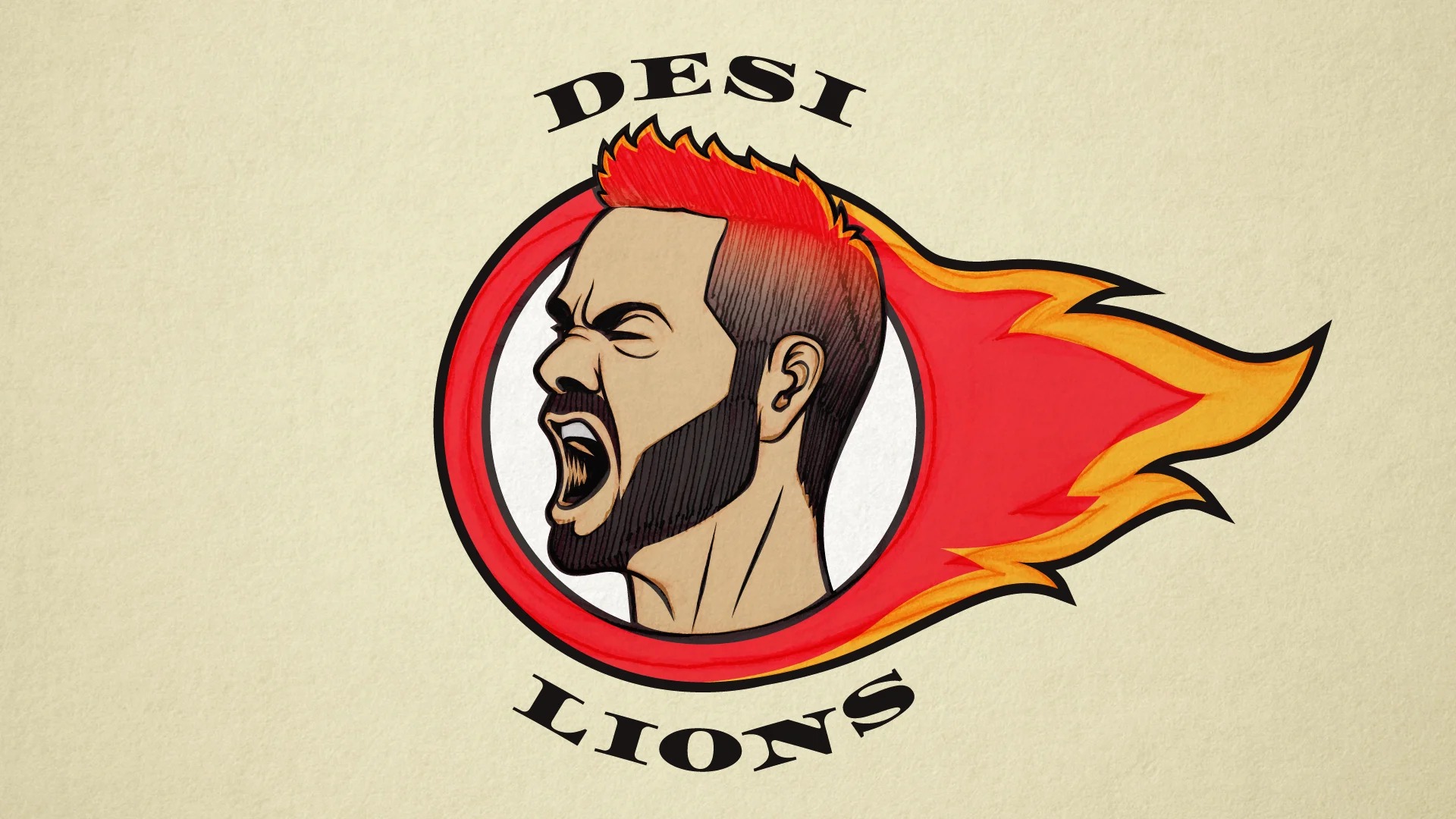A League of Ordinary Gentlemen
Come summer, the armies gather their men for one last climactic campaign. Wounds and fatigue must be ignored, hidden or repaired, or else the bodies in question kept out of the unforgiving battle. Loyalties are re-configured, enemies and friends re-shuffled, or is it every man for himself? It will be dark, but it will be light; we’ll die, live and fight again. It’s the IPL, and cricket celebrates it.
Virat Kohli, captain of India, is injured (wait, he’s due back today!), but Deep Design, idly nursing a rum, can’t help but recall the images from the Test season just past. An Australian wicket has fallen. Virat leaps high, features distorted into a scream, eyes flashing. There is something of a young lion about him. Put a mane on his head, and style it into a flame, and you could have the logo of a new IPL team of firebrands, say the Desi Lions. Or maybe not: too many lions out there.
The automatic fluency with which this stream of thoughts flows leads one to realise that a visual code dominates sporting identities, and IPL. We take for granted the willingness of teams (or franchises, properly stated) to conform to it. Indeed, the logos of the IPL teams make a perfect picture of how the game has developed. They lie, as op-ed writers say, at the confluence of several trends.
For all the money in the world
IPL reflects a new, complete, commercialisation of cricket. It’s been an unusually long, complex journey, weighed down by the ballast of English cricket’s culture, and anchored by its Institutions like the MCC. Though power is now shared by more countries, and the new ‘big three’ oligarchy includes India, this is a late 20th century phenomenon (the ‘International’ in ICC replaced ‘Imperial’ only in 1965). IPL catches up with world sport with private owners, who are client-kings to the emperors at BCCI.
Though cricket’s spread is still not as global as football or chess, IPL can said to be globalised in every other sense. We may as well call it Americanised, in part because the rise of commercial sport and the dominance of the US are coterminous (by 1921, baseball had already dealt with its first betting scandal). America’s influence on how sporting leagues are conducted, commercialised and represented is defining.

Newspaper coverage of the White Sox scandal
Tiger’s the name
It’s striking that IPL team identities (as reflected by names and logos) follow the code of American sport, not European or English leagues, nor a separate cricket code whose roots are essentially British (white flannels, jackets, greens, and traditional crests). In India, modernisation has meant westernisation. But now it tilts to America rather than England.
To start with, team names are structured as in NFL, as two-word names, with a place (like Detroit or Delhi) and a collective word (like Mauraders or Kings). It’s worth examining the halves separately.

National Football League Team logos
IPL team identities follow the code of American sport, not European or English leagues. In India, modernisation has meant westernisation. But now it tilts to America rather than England.
Cricket’s proper place
Cricket teams belong to places: countries, counties, states or cities. It is still run along quasi-national lines, government observation is never far away. Players and teams represent their countries. National bodies (still called Boards in several countries) exercise owner-like control over their teams. Thus in cricket, the place is an administrative entity. In US city names are mined for their individual characteristics and quirks. Thus Chicago’s Bulls represent not only the ill-tempered animal that sees red, but the local meat packing industry.

Chicago Bulls
Animal spirits
The name’s second half is a collective term by which the team describes itself. These words seem to come from a world of primalism, and are part of an American tradition of marketing team sports as conflict, and teams as pugnacious, bellicose or antique.
Of the American sports, football (NFL) and baseball (AL) have quite different cultures in their approach to physicality, skill and enjoyment. Baseball is associated with a more intellectual participation, while NFL tends to reflect the violence and conflict of a contact sport. That may be why football logos tend towards hawks, eagles and other raptors. Baseball is gentler: you’ll see sparrows or bluejays (not to mention Brewers, Indians or socks—no, Sox). Basketball even has Utah Jazz.

(L-R) National Football League; American League logos
IPL identities follow the sub-code set by the football league (NFL), not baseball, down to the cheerleaders. Predatory animals and birds (like in American football) rule this jungle. The American love of antiquity and tradition as a source of authenticity carries over wholesale into IPL, and exoticising India has always been what we do well. So Warriors clash with Royals and Kings, and Knights in medieval armour do duty. Where bland names occur, the logo leaves you in no doubt. Reportedly, Mumbai’s ‘Indians’ was a temperate afterthought to ‘Razors’. But the spinning disc with serrated teeth lives on to signal its intent.

Indian Premier League logos
IPL identities follow the sub-code set by the NFL, down to the cheerleaders. Predatory animals and birds rule this jungle. The American love of antiquity and tradition carries over wholesale into IPL, and exoticising India
Agreeing on aggression
But in a most un-English (and pro-American) way, IPL’s team identities may signify the approval of adversarial aggression as the agreed mode of relations between teams, and the code of behaviour for players. In TV promotion, a cricket match was already an incendiary event: everything is aflame. Cricket doesn’t endorse it, in that its its rules frown on it. But approved it is, despite laboring for long under unsustainable ideas like fair play (remember the nearly archaic phrase ‘not cricket’) and wearing the mask of a gentleman’s’ game, however often it slipped.

English Cricket League Clubs
Cricket sneezes, everyone catches a code
IPL amplifies American influence, projecting it on to the Indian football and Kabaddi leagues which follow similar paths. What’s interesting is the incentive that teams have to conform to the code, to belong to a comity rather than depart from it. Their identities have different designers and owners, but they appear to have been orchestrated to form a theatre in which the teams are cast members. Part of this theatre may be the implicit promotion of personal brands, like our Desi Lion, whose aggression, not batting, dominated the Test Series, and the BCCI supported him. That’s influence for you.
______________________
First published in a slightly modified form ‘A League of Ordinary Gentlemen’ in Business Standard, 15 April, in Deep Design, a fortnightly column by Itu Chaudhuri.

